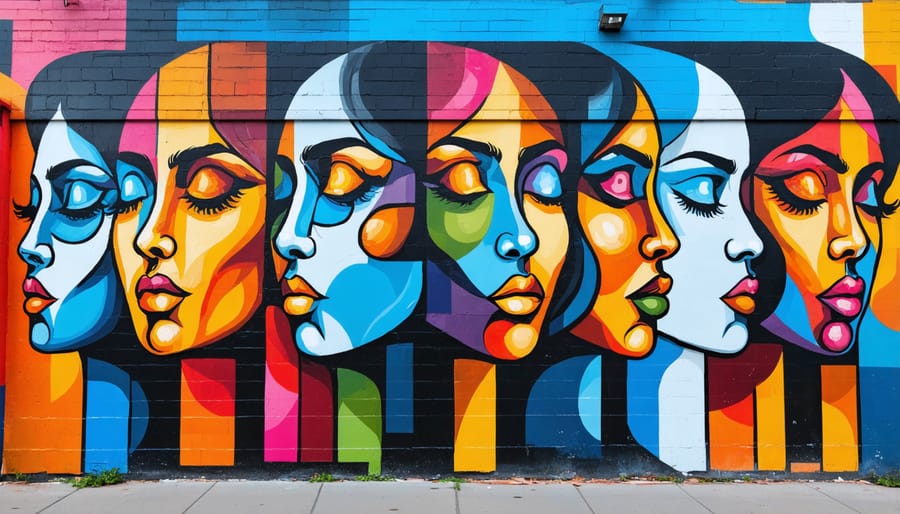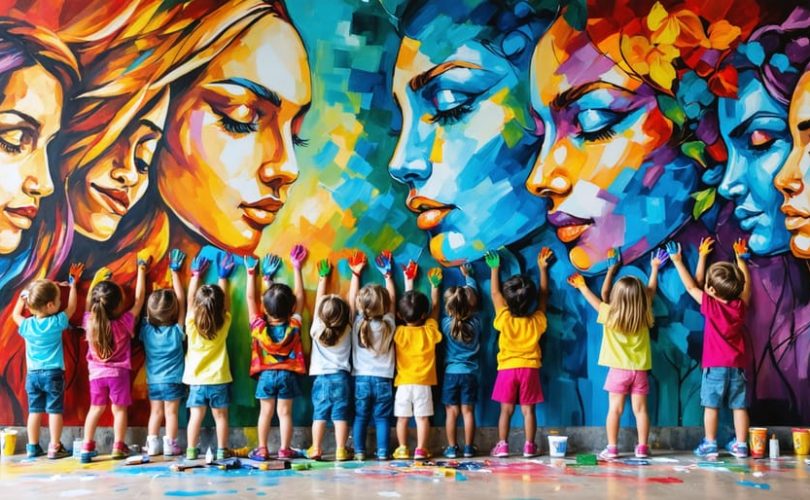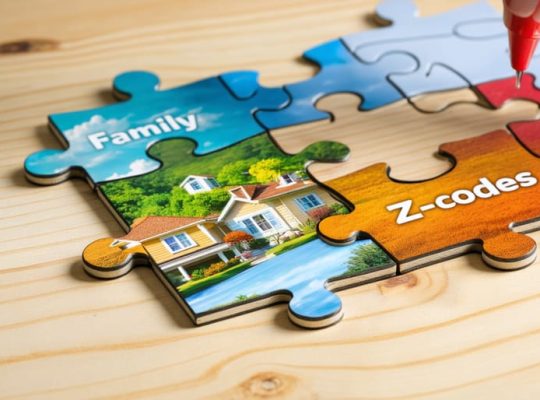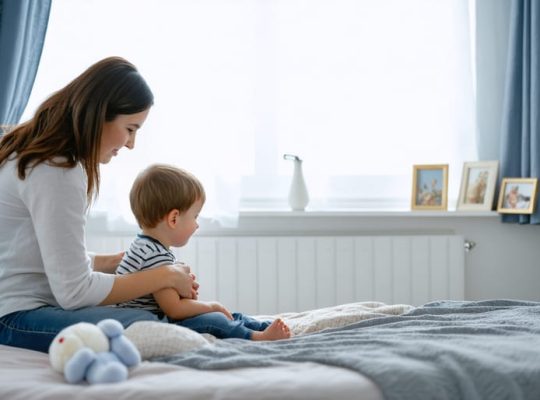Breaking down mental health barriers starts with bold, personal conversations that break the stigma around mental health. Share authentic stories of recovery and resilience in school assemblies, community gatherings, and social media platforms to normalize mental health discussions. Launch peer support groups where children and teens can openly express their feelings without judgment, fostering a safe environment for emotional growth. Partner with local mental health professionals to organize workshops that equip parents and teachers with practical tools for identifying early warning signs and accessing appropriate support services.
By combining grassroots advocacy with professional guidance, we create a powerful foundation for lasting change in how communities perceive and respond to mental health challenges. This collaborative approach ensures that every child feels understood, supported, and empowered to seek help when needed, transforming the mental health conversation from whispers into empowering dialogue that saves lives.
Our children deserve a future where mental health is discussed as openly as physical health, and achieving this begins with each of us taking meaningful action today.
Art and Visual Expression as Awareness Tools
Creating Engaging Social Media Content
Social media platforms offer powerful tools for spreading mental health awareness, especially when content is crafted thoughtfully and creatively. Visual content like infographics can break down complex mental health concepts into digestible, shareable pieces that resonate with diverse audiences.
When creating social media content, focus on developing eye-catching graphics that combine compelling statistics with hopeful messages. For example, pair facts about children’s anxiety with practical coping strategies, or illustrate the benefits of seeking help through simple flowcharts. Use warm, inviting colors and friendly illustrations to make the content approachable and less intimidating.
Consider creating short, educational video clips featuring mental health professionals discussing common concerns in child mental health. These can be particularly effective on platforms like Instagram and TikTok, where brief, engaging content tends to perform well.
Remember to include actionable tips and resources in your posts. Create shareable quote cards with positive affirmations or simple self-care reminders. Design mini-series that address specific topics like recognizing signs of depression in children or building emotional resilience.
When sharing content, use relevant hashtags and encourage followers to share their own experiences in a safe, moderated environment. Regular posting schedules help maintain engagement, but quality should always take precedence over quantity. Always fact-check information and credit reliable sources to maintain credibility and trust with your audience.
Community Art Projects and Exhibitions
Art has a unique power to break down barriers and spark meaningful conversations about mental health. By organizing community art projects, we create safe spaces where children and adults can express their emotions and share their stories through creative mediums.
Consider organizing a collaborative mural project where students, parents, and community members can contribute their artistic interpretations of mental wellness. Local artists can guide participants in creating pieces that represent hope, resilience, and emotional well-being. These murals not only beautify public spaces but also serve as lasting reminders of our community’s commitment to mental health awareness.
School art exhibitions focused on emotional expression can be particularly impactful. Students might create self-portrait collages reflecting their feelings, or develop installations that represent their mental health journeys. Parents and teachers report that these projects often lead to deeper conversations about emotions and well-being at home.
“The art room became a sanctuary where students felt safe to express their complicated feelings,” shares Maria Chen, an art therapist who regularly organizes such exhibitions. “We’ve seen remarkable changes in how openly children discuss their emotional challenges after participating in these projects.”
Consider hosting art workshops where participants create comfort boxes, anxiety-relief tools, or stress-management visual guides. These hands-on activities not only produce meaningful artwork but also teach valuable coping strategies that participants can use in their daily lives.
Remember to display artwork in accessible community spaces like libraries, community centers, or local cafes to reach broader audiences and continue the conversation beyond the initial creation process.

Storytelling and Personal Narratives
Blog Posts and Written Content
Sharing personal stories and experiences through blog posts can be a powerful way to normalize conversations about mental health. When writing content, focus on creating relatable narratives that resonate with readers while offering hope and practical support.
Start by sharing your own experiences or those of others who have given permission to tell their stories. Include both challenges and successes, showing that recovery and management are possible. For example, describe how therapy helped a child overcome anxiety, or how a family learned to support their teenager through depression.
Remember to maintain authenticity while being mindful of trigger warnings and sensitive content. Include expert insights from mental health professionals to provide credibility and valuable perspectives. Mix educational content with personal narratives to create a well-rounded resource for readers.
Consider creating different content formats to reach diverse audiences:
– Personal essays about mental health journeys
– Tips and strategies for managing common challenges
– Interviews with mental health professionals
– Resource lists and guides for seeking help
– Success stories and recovery narratives
When sharing content, use clear, accessible language and avoid clinical jargon. Include action steps and resources readers can use. Most importantly, maintain a hopeful tone while acknowledging the reality of mental health challenges. End posts with encouraging messages and information about where to find support.
Remember to regularly engage with readers through comments and follow-up posts, creating a supportive community around your content.

Video and Podcast Initiatives
Creating engaging video and podcast content can be a powerful way to reach both children and adults with mental health messages. Short, informative videos shared on platforms like YouTube and TikTok can make complex topics more digestible and relatable. Consider featuring real stories from young people who’ve overcome mental health challenges, always ensuring proper consent and privacy protection.
Podcasts offer a unique opportunity for in-depth discussions about mental health topics. Parents and educators can start a podcast series featuring conversations with mental health professionals, sharing coping strategies, and discussing how to recognize early warning signs. These audio formats are particularly effective when combined with other digital mental health tools to create a comprehensive awareness campaign.
When creating multimedia content, focus on:
– Using age-appropriate language and examples
– Including diverse voices and experiences
– Incorporating animation and graphics for younger audiences
– Providing actionable tips and resources
– Maintaining a hopeful and solution-focused tone
Remember to add closed captions to videos and provide transcripts for podcasts to ensure accessibility. Regular posting schedules help build an engaged audience, while collaborations with mental health organizations can extend your reach and add credibility to your content.
Share your multimedia content across social media platforms and encourage others to redistribute it through their networks. This multiplies your impact and helps create a ripple effect of mental health awareness throughout the community.
Interactive Events and Workshops
School and Community Programs
Schools play a vital role in promoting mental health awareness, and implementing effective mental health support in schools can create lasting positive impact. Start by organizing age-appropriate workshops that teach emotional intelligence and coping skills. For elementary students, use interactive activities like feeling wheels and puppet shows to help them identify and express emotions. Middle school programs can focus on stress management, bullying prevention, and building healthy relationships.
High school initiatives should address more complex topics like anxiety, depression, and suicide prevention, while maintaining a hopeful and solution-focused approach. Consider implementing peer support programs where trained students can serve as mental health ambassadors.
Community involvement strengthens these educational efforts. Partner with local mental health professionals to conduct parent workshops and teacher training sessions. These experts can share valuable insights and practical strategies for supporting children’s emotional well-being. Organize mental health fairs that bring together students, families, and community resources in a welcoming environment.
Regular assemblies featuring guest speakers who share personal recovery stories can help normalize mental health discussions and demonstrate that seeking help is a sign of strength. Remember to incorporate cultural sensitivity in all programs, ensuring that diverse perspectives and experiences are represented and respected.

Virtual Events and Online Communities
In today’s digital age, virtual events and online communities have become powerful tools for spreading mental health awareness. These platforms offer safe, accessible spaces for people to connect, share experiences, and learn about mental health resources.
Consider hosting regular virtual workshops or webinars featuring mental health professionals who can address common concerns and answer questions from participants. These sessions can be recorded and shared later, reaching an even broader audience. Parents and educators particularly appreciate the flexibility of attending these events from home while managing their busy schedules.
Social media platforms provide excellent opportunities to build supportive communities. Create private Facebook groups or Discord servers where members can discuss mental health topics, share resources, and offer peer support. Remember to establish clear community guidelines that promote respectful dialogue and maintain a safe environment for all participants.
Online mental health awareness campaigns can be highly effective when properly executed. Use engaging content formats like live streams, interactive polls, and Q&A sessions to keep your audience involved. Share personal stories (with permission) and expert insights to help normalize mental health discussions and reduce stigma.
Virtual support groups, especially those focused on specific aspects of mental health or particular age groups, can provide targeted assistance to those who need it most. These groups can meet regularly through video conferencing platforms, offering a consistent source of support and connection.
Remember to make your virtual events accessible by providing closed captions, offering multiple time slots, and ensuring technical support is available for participants who need it.
Measuring Impact and Maintaining Momentum
To ensure your mental health awareness initiatives create lasting impact, it’s essential to measure their effectiveness and maintain momentum over time. Start by establishing clear, measurable goals before launching any campaign. These might include tracking attendance at events, monitoring social media engagement, or conducting pre and post-awareness surveys in your community.
Consider implementing regular feedback loops through simple questionnaires or informal discussions with participants. Ask questions like “What did you learn?” and “How has this information changed your perspective on mental health?” This qualitative data provides valuable insights into the effectiveness of your efforts and helps identify areas for improvement.
Document success stories and challenges along the way. When parents share how learning about mental health has helped them better foster mental health resilience in their children, these testimonials become powerful tools for inspiring others and demonstrating real-world impact.
To maintain momentum, consider these proven strategies:
1. Create a calendar of regular events and activities throughout the year, not just during Mental Health Awareness Month
2. Build partnerships with local schools, healthcare providers, and community organizations
3. Develop a core team of dedicated volunteers who can help sustain initiatives
4. Regularly update and refresh your awareness materials with current information
5. Celebrate small wins and acknowledge contributors
Remember that sustainable change takes time. Rather than aiming for dramatic immediate results, focus on creating consistent, incremental progress. Track metrics like the number of resources distributed, website visits, or help-seeking behaviors in your community.
Consider implementing a quarterly review system to assess what’s working and what isn’t. This might include:
– Reviewing engagement metrics
– Gathering feedback from stakeholders
– Updating strategies based on community needs
– Identifying new opportunities for outreach
By maintaining detailed records of your efforts and their outcomes, you’ll be better equipped to secure future funding, attract partners, and demonstrate the value of your mental health awareness initiatives to the community.
As we’ve explored throughout this guide, spreading mental health awareness is not just about sharing information – it’s about creating lasting change in our communities. By combining digital outreach through social media and online platforms with meaningful face-to-face interactions, we can break down stigma and foster open conversations about mental health.
Remember that every small action counts. Whether you’re organizing a school workshop, sharing educational resources with other parents, or simply having honest conversations with children about emotions, you’re contributing to a more understanding and supportive environment for mental health.
The key is to maintain consistency in our efforts while being sensitive to different perspectives and experiences. By involving diverse voices, including mental health professionals, educators, and families who have lived experience, we create a more inclusive and effective awareness campaign.
Let’s commit to making mental health awareness an ongoing priority rather than a one-time effort. Start with one strategy that resonates with you and gradually expand your impact. Share your experiences with others, learn from their insights, and adapt your approach as needed.
Together, we can create a world where discussing mental health is as natural as talking about physical health, where seeking help is encouraged, and where every child knows they’re not alone in their emotional journey. Your role in this movement matters – take that first step today.







